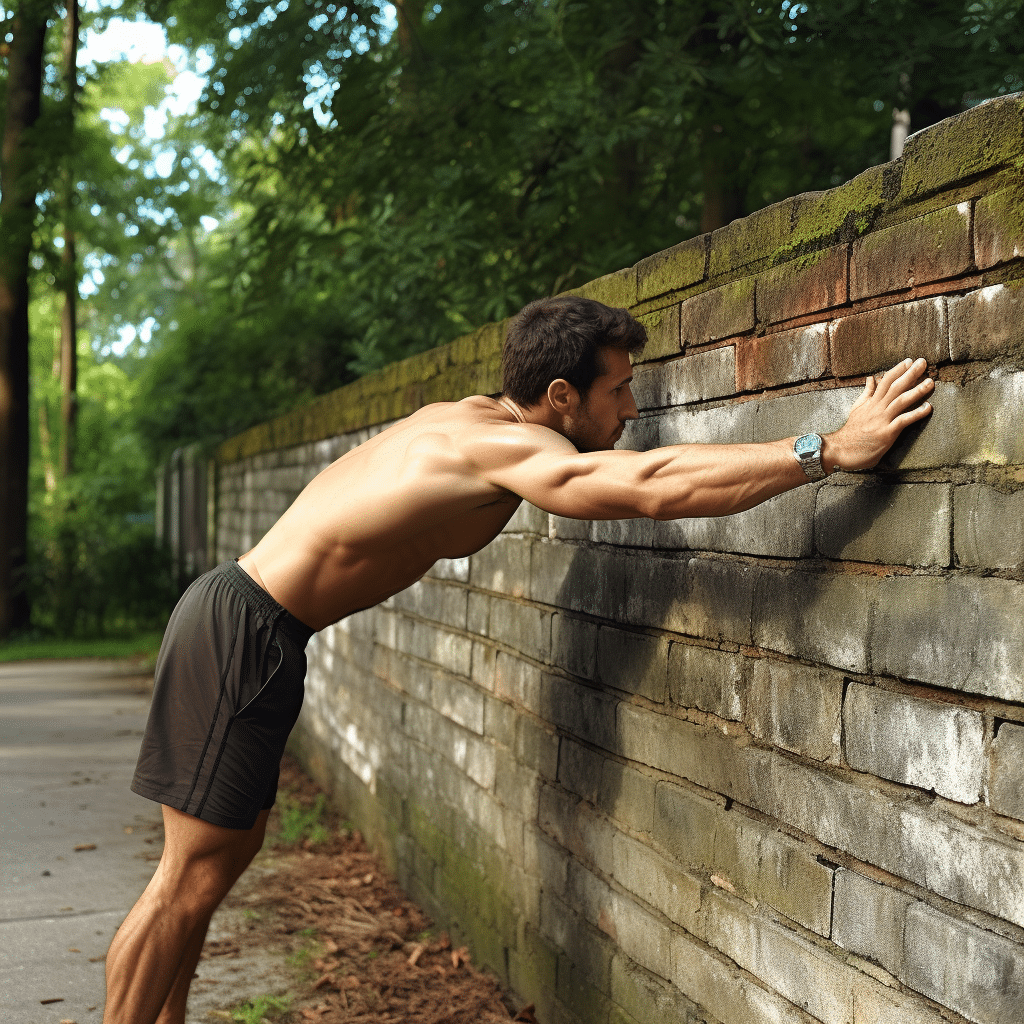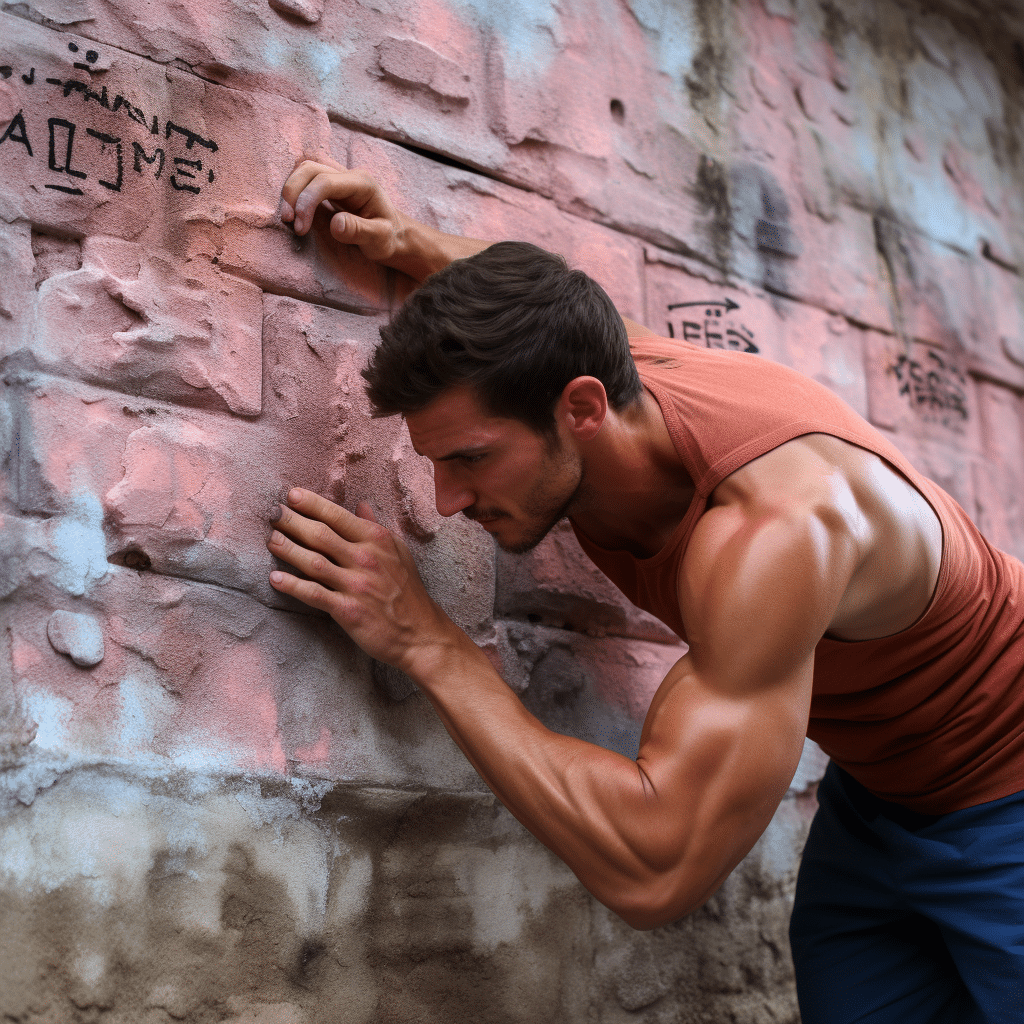Introduction
Are Wall Pushups Effective: Wall pushups are a simple yet often overlooked exercise that can be a valuable addition to your fitness routine. These modified pushups are performed by pushing against a wall instead of the floor, making them a suitable choice for individuals of various fitness levels. But the question that lingers is whether wall pushups are truly effective in achieving your fitness goals.
Wall pushups can be particularly useful for beginners or those who may have limited upper body strength. They offer a less daunting entry point to pushup exercises and can help in developing the muscles in your chest, shoulders, and arms. They also serve as a fantastic alternative for people with wrist or shoulder injuries, as they reduce the pressure on these vulnerable areas.
In this discussion, we will explore the effectiveness of wall pushups, dissecting the benefits and potential limitations of this exercise. We will consider the muscle groups targeted, the variations possible, and their role in enhancing upper body strength and posture. By the end of this exploration, you’ll have a comprehensive understanding of whether wall pushups are a worthwhile exercise in your fitness journey.
Can you gain muscle from wall pushups?
You can do it even if you have flabby arms. Wall push ups exercise builds strength and muscle. When you do this exercise correctly, you’ll gain arm, shoulder, and chest strength very fast. It doesn’t matter whether you’re an out of shape beginner or if you’re a senior.
Wall push-ups are a basic workout that focus on the chest, shoulders, and triceps. They may not be as effective as other exercises for muscle gain, but they can still help beginners or those with limited strength. Wall push-ups are great for people new to exercise or recovering from injury and can improve upper body strength and endurance.
To gain muscle from wall push-ups, it’s important to do them correctly and increase effort gradually. This can be done by increasing repetitions, changing body angle, or trying different types of push-ups. For more significant muscle growth, it’s recommended to move on to more challenging exercises like classic push-ups or bench presses. A balanced diet with enough protein is also essential for muscle growth.
Although not the most effective exercise for muscle gain, wall push-ups are a good starting point for beginners and a useful addition to a fitness routine.
If you’re new to exercising or have physical limitations, it’s important to start with a gentle routine. Building up gradually is key.
Do wall push-ups build abs?
Wall push-ups work on your biceps, triceps, pecs, and the anterior deltoids that help you with the movement of your shoulder. Apart from that, this exercise also engages your back, traps, abs, and hips muscles. And that’s how all the toning happens!
Wall push-ups primarily target the muscles of the upper body, including the chest, shoulders, and triceps. While they can engage the core to a certain extent for stability, wall push-ups are not specifically designed to build abdominal muscles or abs. If you are looking to develop stronger and more defined abs, you should focus on exercises that specifically target the abdominal muscles.
Exercises like planks, leg raises, crunches, and bicycle crunches are more effective for building and toning the abdominal muscles. These exercises engage the rectus abdominis, transverse abdominis, and obliques, leading to better results for core development. That visible abs also require a low body fat percentage, which is achieved through a combination of a balanced diet and cardiovascular exercise to burn excess fat.
In summary, while wall push-ups may engage the core muscles to some extent, they are not a primary exercise for building abs. Incorporating dedicated abdominal exercises into your workout routine and maintaining a healthy diet are key for developing strong and defined abdominal muscles.
Does wall push-ups reduce belly fat?
Because push-ups mainly focus on the muscles of the upper body, they have relatively little direct impact on the abdominal area. Push-ups help reduce belly fat if and only if the calories burned during exercise are enough to convert fat loss and increase abdominal muscle.
Wall push-ups and other resistance exercises can help with fat loss, but they won’t specifically target belly fat. Fat loss happens when you burn more calories than you consume. Regular exercise, like wall push-ups, can help you burn calories and increase energy expenditure.
However, spot reduction, or losing fat from a specific area, is not scientifically supported. Your body decides where it sheds fat, often based on genetics. Reducing belly fat requires a comprehensive approach, including cardio, strength training, and a healthy diet.
To reduce belly fat, try a well-rounded fitness routine with exercises for different muscle groups, like cardio, strength training, and core exercises. A balanced diet with a calorie deficit is also important for fat loss, including belly fat reduction.
Losing fat in general won’t necessarily reduce belly fat. To trim your waistline, you should do cardio, strength and core exercises, eat a healthy diet with fewer calories. This combo works best.

What will 100 wall push-ups do?
These muscles are used to help improve your postural stability, balance, and upper body mobility. Wall pushups target the upper body muscles, such as the chest, arms, and shoulders, as mobilizers. Other muscles in the body work to stabilize the position.
Performing 100 wall push-ups can have several benefits for your body. First and foremost, they are an excellent exercise for building upper body strength, specifically targeting your chest, shoulders, and triceps. By doing 100 wall push-ups, you’re engaging these muscles and promoting muscle growth and definition. Moreover, push-ups, even against a wall, engage your core muscles, aiding in strengthening your abdominal area.
Additionally, doing 100 wall push-ups can improve your overall cardiovascular health. Engaging in this level of physical activity raises your heart rate, which, when done regularly, can enhance your cardiovascular endurance, leading to a healthier heart and reduced risk of cardiovascular diseases.
Performing 100 wall push-ups can help improve your posture and flexibility. It engages the muscles in your back, which are essential for maintaining an upright posture. Additionally, this exercise involves the stretching and contracting of various muscle groups, promoting flexibility over time.
Lastly, doing 100 wall push-ups can contribute to burning calories, although the exact number depends on factors like your weight, age, and intensity. Burning calories can aid in weight management and, when combined with a balanced diet, can contribute to a healthier body composition.
How many wall pushups is good?
For wall push-ups, begin by performing 2–3 sets of 15–20 repetitions. Choose your number of sets and repetitions based on your ability to maintain proper technique
.The number of wall push-ups that are considered “good” varies from person to person, depending on their fitness level, goals, and physical condition. Wall push-ups are an excellent exercise for beginners or those with limited upper body strength. They provide a less intense version of the traditional push-up and help you gradually build strength.
If you’re just starting, you might aim for a set of 10 to 15 wall push-ups, and then progressively increase the number as you get stronger. However, there is no one-size-fits-all answer. Some individuals may start with fewer repetitions, while others might be able to do more. It’s crucial to focus on maintaining proper form and gradually challenging yourself over time to make progress.
The key is to set achievable goals and slowly increase your reps as you become more comfortable and stronger. As your strength and technique improve, you can transition to more challenging variations of push-ups, such as regular or knee push-ups, to continue progressing in your fitness journey.
Are wall push-ups better than regular push-ups?
Wall Pushups are an effective, beginner friendly exercise that helps build foundational upper-body strength and muscular endurance. They target the same primary muscle groups as regular pushups, including the chest, shoulders, triceps, and core, but with less intensity and stress on the joints.
Whether wall push-ups are better than regular push-ups depends on your fitness level, goals, and personal circumstances. Wall push-ups are typically considered an entry-level exercise and are ideal for those who are new to strength training, lack upper body strength, or have physical limitations. They are easier to perform, making them a great choice for beginners.
On the other hand, regular push-ups are a more advanced exercise that involves supporting a significant percentage of your body weight. They engage more muscles, including your chest, triceps, and core, making them a highly effective upper body exercise. Regular push-ups are an excellent choice for those seeking to build strength, endurance, and improve overall fitness.
The choice between wall push-ups and regular push-ups ultimately depends on your current fitness level and goals. If you’re just starting and need a gentler introduction to push-up exercises, wall push-ups are a good choice. However, as you progress and become more capable, transitioning to regular push-ups can provide a more challenging and effective workout for building strength and muscle.
Are wall push-ups better than knee push-ups?
According to Wickham, if you can do a knee push-up, you should they’re actually the better scaling option for folks working toward standard push-ups. One thing, though: “Many people don’t have the strength to do a knee push-up if they’re just starting out,” says Wickham. “The wall push-up is an easier knee push-up.”
Wall and knee push-ups are modified push-ups with various benefits and adaptability for different people. Your needs and goals determine whether wall or knee push-ups are better.
Standing and not bearing as much weight makes wall push-ups simpler than knee push-ups. For total beginners or those who have trouble getting down, they are ideal. Wall push-ups are a good way to increase upper body strength because they are easier.
Unlike toe push-ups, knee push-ups are done on your knees. Because you must hold some of your body weight, they are harder than wall push-ups but easier than ordinary push-ups. For those who have outgrown wall push-ups and want to increase strength, knee push-ups are ideal.
Your fitness level and goals determine whether to do wall or knee push-ups. Wall push-ups are good for novices or those with little upper body strength, whereas knee push-ups are good for those wishing to develop in push-up training.
How many calories does 10 wall push-ups burn?
Push-ups, on average, burn around . 32 calories. This means if you did 10 push-ups, you would burn 3.2 total calories. If you were to perform 25 pushups instead, this would burn approximately 8 calories.
Your weight, intensity, and duration affect how many calories you burn during exercise, including wall push-ups. Instead of burning calories, wall push-ups build upper body strength at low to moderate intensity.
An average 155-pound person can burn 20-30 calories in 10 minutes of moderate-intensity push-ups. Wall push-ups are less intense than regular push-ups, so you may burn fewer calories.
It’s important to remember that wall push-ups build strength, not calories. Combining cardiovascular exercises like jogging or cycling with strength training will burn more calories.
Wall push-ups build upper body strength but burn few calories. Although weight and effort affect the number of calories burned during 10 wall push-ups, it is usually low compared to cardiovascular exercises.

Conclusion
In the pursuit of a well-rounded fitness regimen, the effectiveness of wall pushups cannot be dismissed. While they may not be a one-size-fits-all solution, wall pushups have their place in the fitness world, catering to a range of individuals with varying goals and physical conditions.
Wall pushups are a mild introduction to pushups for novices. They help increase upper body strength and reduce injury risk, making them a good precursor to pushups. Low-impact wall pushups can help wrist and shoulder patients strengthen their upper bodies.
Recognize their limitations. Wall pushups may not be as intense as floor-based pushups, which may inhibit advanced muscle development and strength increases. They can be a good supplement to a well-rounded workout, especially when combined with bodyweight and resistance training.
Specific people and situations benefit from wall pushups. They are significant for their versatility, accessibility, and training potential. Consider adding them to a personalized training plan to maximize their efficacy.

